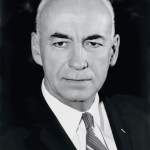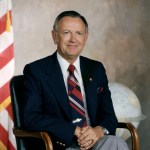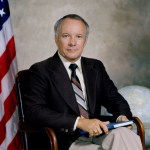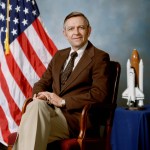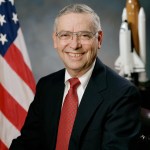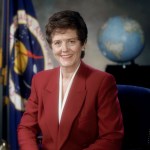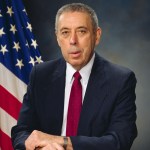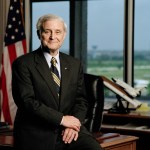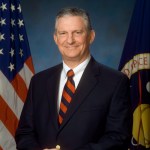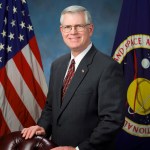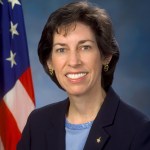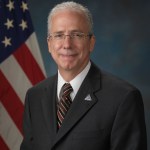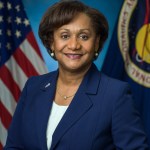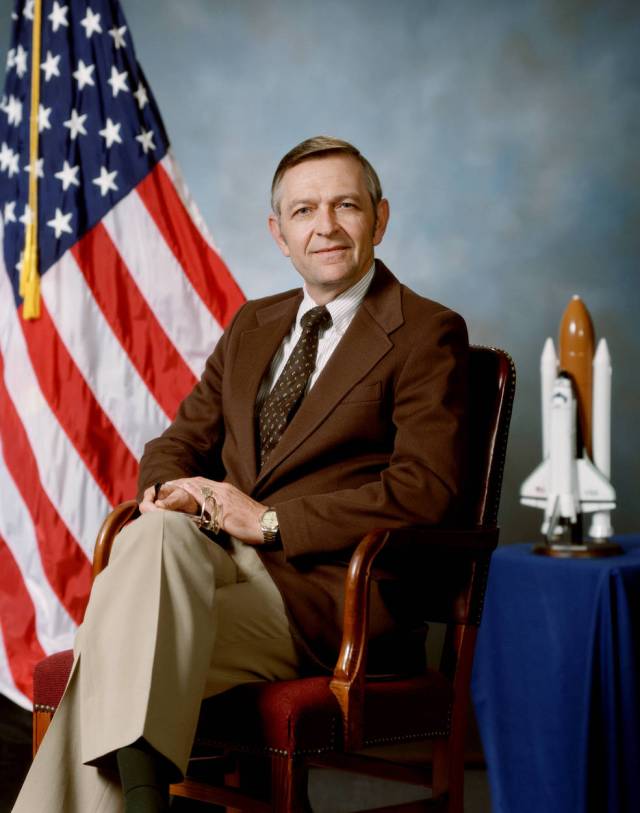
Jesse W. Moore
Johnson Space Center Director, 1986
Jesse W. Moore became Johnson Space Center’s fourth center director on January 23, 1986, only five days before the launch and loss of the STS-51L crew and the Challenger orbiter. Then associate administrator for the Office of Space Flight, NASA planned to keep Moore in both positions through May, when the space agency intended to launch two important space shuttle missions; one crew would deploy a probe to study the sun and another mission would launch the Galileo spacecraft to Jupiter. Moore had been working on Galileo since the 1970s, when he spent time on Capitol Hill to ensure the program received congressional approval. Once initial funding was approved, NASA named Moore as Galileo’s Science and Mission Design manager.
Moore began his NASA career at the Jet Propulsion Laboratory (JPL) in 1966. He was drawn to the lab because of the planetary missions NASA was working on and especially enjoyed the work because he could share the details of his day with his family. His previous position involved a classified program, which made NASA’s mission—to explore the solar system—even more important to him. During his twelve years at JPL, he also provided guidance analysis and designed guidance plans for the planetary missions known as Mariner and Voyager.

In 1978, Moore transferred to NASA Headquarters at the urging of Noel Hinners, associate administrator for Space Science, where there was an opening in the Solar Terrestrial Division. Moore first became that division’s deputy director and later went on to head the Spacelab Flight Division until December 1981, when NASA appointed him director of the Earth and Planetary Exploration Division.
In 1983, Deputy Administrator Hans Mark asked Moore to move from the Office of Space Science to the Office of Space Flight. General James A. Abrahamson, associate administrator for Space Flight, needed help with managing the day-to-day activities of the office because he was busy marketing the space shuttle’s capabilities to industry and bringing new customers onboard. When Abrahamson left to direct the Strategic Defense Initiative Program in 1984, Moore became acting associate administrator of Space Flight. He formally accepted the position in August of that year.
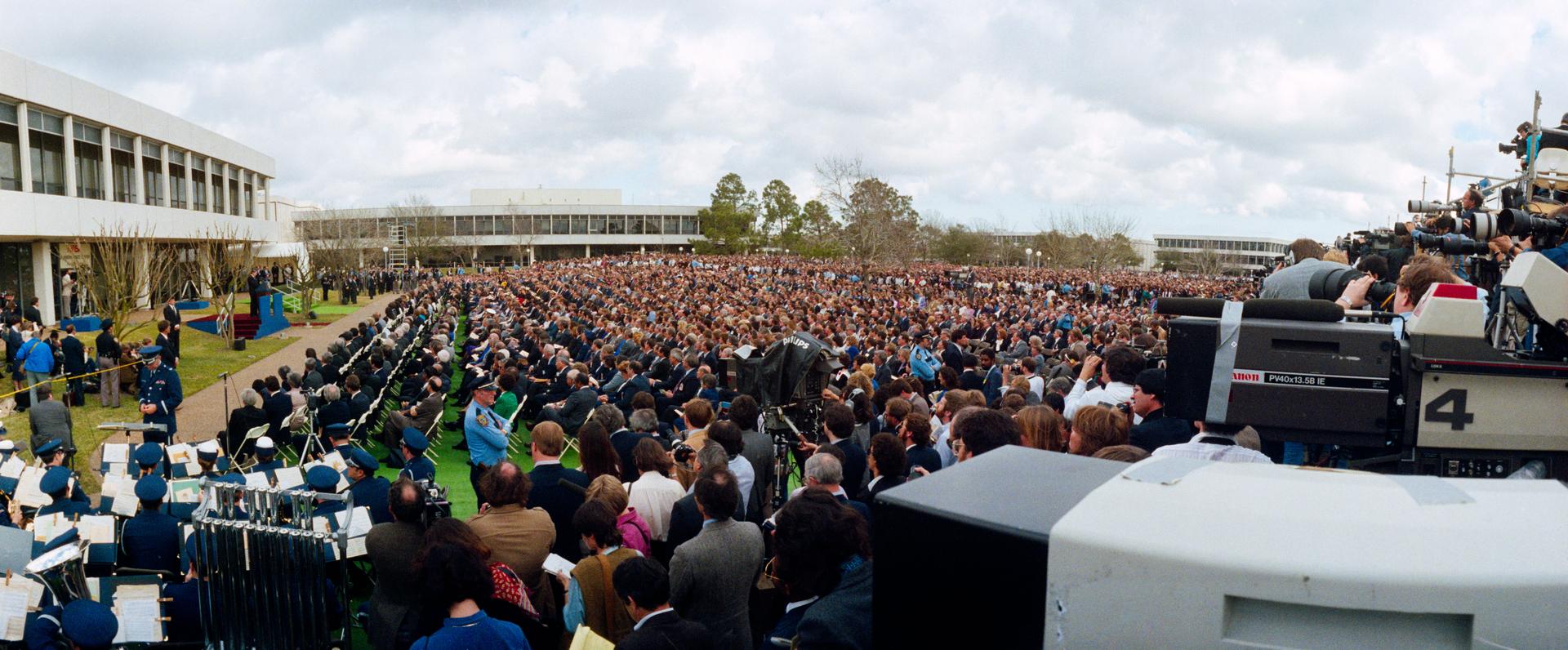
Days after being named Johnson Space Center’s Director in 1986, Moore made the final fateful decision to launch the STS-51L mission. After the catastrophic loss of seven crewmembers and the Challenger, he headed NASA’s Design and Data Analysis Task Force, an internal team charged with investigating the accident until President Ronald Reagan appointed a committee, known as the Rogers Commission, to study the cause of the disaster. As the center recovered from the shock of the tragedy, Moore experienced a great deal of strain. For many at Johnson the event was heartbreaking, and Moore was sensitive to the issues facing center employees as they mourned the loss of their colleagues, friends, and neighbors. Many at the Houston center struggled to cope, and NASA expected too much from Moore. As the new director, he had to complete his family’s move from Virginia to Houston, testify in front of the Rogers Commission on his knowledge of O-ring leaks and the decision-making process to launch STS-51L, work on the manned spaceflight budget for the coming fiscal year, and put together recovery plans for the Space Shuttle Program and to replace the lost orbiter. He was also actively involved in the Space Station Program, to ensure the center received a piece of the work moving forward. Things were so hectic that Moore had not even relocated to Houston by May.
NASA and the country owe special thanks to Jesse, who held two very difficult jobs during the days following the Challenger accident.
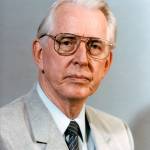
NASA Administrator James Fletcher
May 1986 – April 1989
By the fall of 1986, Moore found himself struggling and asked the NASA Administrator for a sabbatical. He explained the challenges he faced to center employees in an October 2, 1986, address, noting that the last year had been “difficult” and the burden was “beginning to have an adverse effect and take its toll” on his family. “Given my knowledge of the center, the pressures I have felt recently, and the circumstances facing NASA,” he said, “I believe it is best for NASA, best for JSC, and most importantly best for me to step aside at this time.” NASA Administrator James Fletcher thanked him for his service, believing “NASA and the country owe special thanks to Jesse, who held two very difficult jobs during the days following the Challenger accident.” In February 1987, Moore resigned from NASA to take a position with Ball Aerospace in Colorado.
Visit the NASA Oral History Collections to read oral histories with NASA’s Johnson Space Center Directors and others across NASA.



























